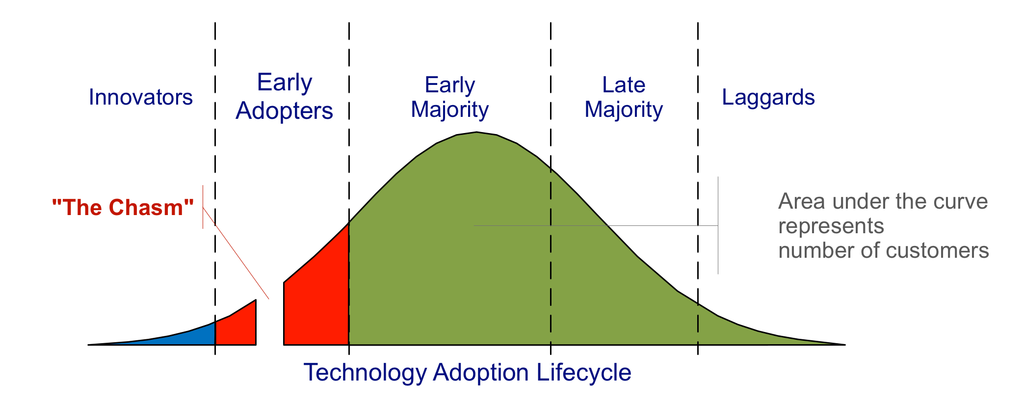Where will Recruitment Marketing Innovation Happen? Hint: Not Where You Think
Photo by Ameen Fahmy on Unsplash Throughout my research into recruitment marketing and employer branding as I’ve written my book,…
 Photo by
Ameen Fahmy on
Unsplash
Photo by
Ameen Fahmy on
Unsplash
Throughout my research into recruitment marketing and employer branding as I’ve written my book, I’ve noticed a focus on enterprise companies and what they’re doing.
I get it. They’re well known and have established brands and followings. They typically have larger budgets than smaller companies and more people to convert into recruitment marketers.
However, the more I think about the discipline of recruitment marketing, and how early on we really are in defining what it is and how it fits into the scheme of things, the more I think that meaningful change isn’t going to happen at the enterprise level.
I’ve been thinking about this in the same way that Geoffrey Moore illustrated the technology adoption lifecycle in his breakthrough book Crossing the Chasm. This principle is also applicable to new products, services, companies, and ideas.
(Disclaimer: I’m paid a commission through the Amazon Associates program when purchases are made through product links I share. An amateur writer has to get paid somehow, right?)

The illustration above is an example of the technology adoption lifecycle. The “Early Majority” is where most people focus too early when presenting new ideas, products, or services. This is usually where you ‘make it big’ and become well-known. Hence, why it’s attractive. Putting your focus here too early is also why most ideas and new businesses never make it off of the ground.
I would consider most enterprise companies in this phase. They’re more risk-averse and need social proof that it works. There’s more bureaucracy and more of a focus on short-term results, in line with their business model of serving shareholders first.
SMBs are more likely to be in the “Innovators” and “Early Adopters” phases. This is where innovation and real change happens.
These companies are nimble, more agile, and more open to testing and experimentation. They tend to focus more on their customers and have more of a long-term outlook.
I realize I’m making an assertion that may be way off, but right now, I believe this is going to have to be where recruitment marketing is transformed into what it will eventually become.
The discipline of recruitment marketing feels like it’s in a bit of a predicament. People are unsure of how it fits into their organization, why they need to spend the money on it, and, most importantly, what they’ll tell their boss to secure the budget and time to make it work.
Recruitment marketing and employer branding are long-term strategies requiring time to build the momentum needed to show results.
Time is often a luxury most talent acquisition professionals in enterprise organizations don’t have.
This is why, if recruitment marketing is going to turn the corner and ‘cross the chasm’ into the world of enterprise companies, it’s going to have to start with SMBs.
We, as the innovators in the discipline, need to turn our focus to partnering with SMBs. This is where the ‘magic’ is going to happen.